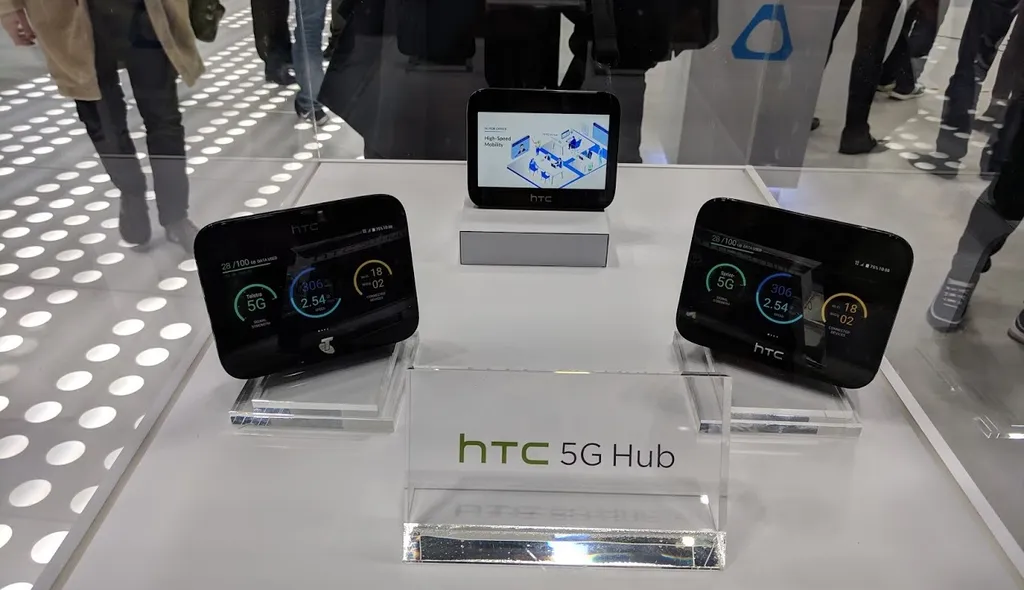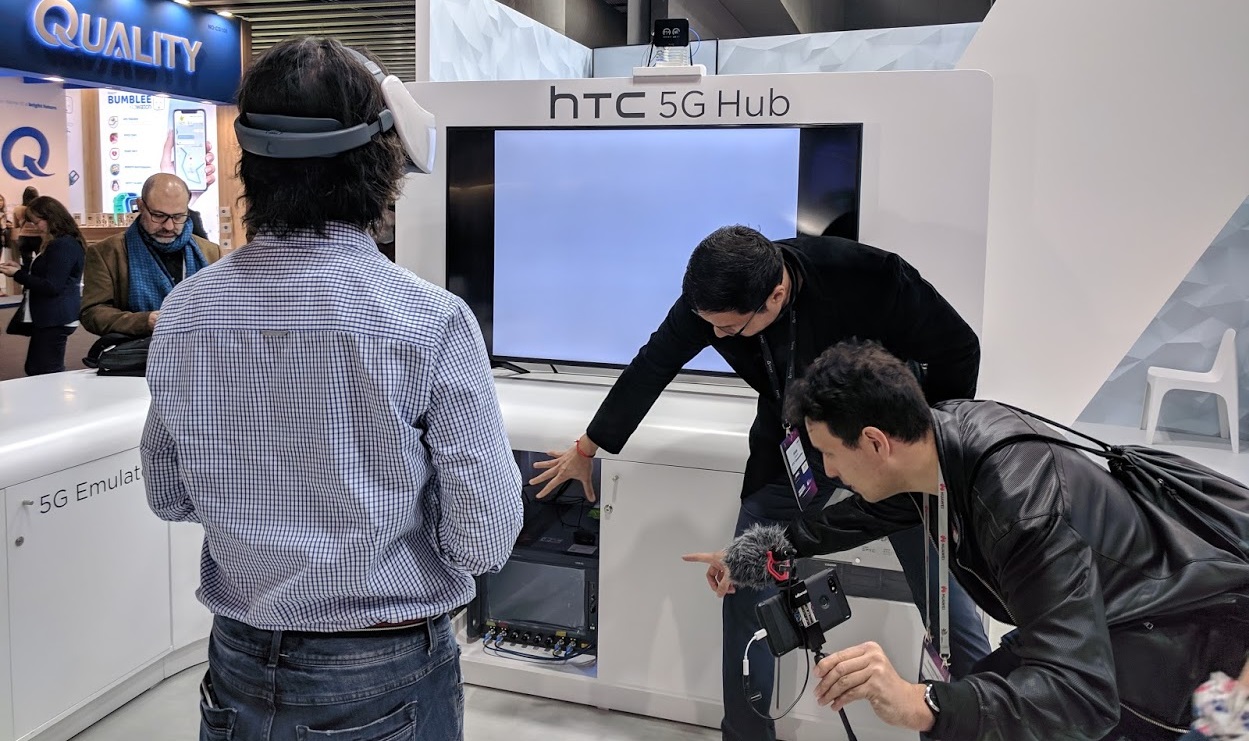If I had a penny for every time I’ve heard the term ‘5G’ in the past 48 hours. At MWC 2019 you were in constant earshot of someone telling you why it was the future. The same was true for the past two shows, mind you, but this year the buzzwords are actually materializing into something tangible. HTC Vive was one of the companies to prove that.
Vive was showing its newest headset, the Focus Plus, streaming content via its new 5G hub this week. HTC had its hub positioned at the top of a booth, much like you’d have a Vive base station. Locked away in a cupboard below was a huge box of wires that I was told simulated a real 5G network. To showcase its potential? What else other than Superhot VR?
Of course, all of this has to be taken at HTC’s word. They told me that, of all the companies at MWC, they were one of (if not the) only ones to be simulating a “real” 5G network. While others have Wifi networks specced to 5G standards, HTC bought equipment it says enabled a real 5G connection. They showed me a big box with lots of wires that they said was very expensive. Still, I have no way of knowing just how close that network gets to what 5G will really be like when it’s out in the wide world.
What I saw was a shaky foundation for something hugely promising. I was able to fight my way through Superhot’s first level on a standalone VR headset. The experience was streaming from a PC elsewhere on the booth. The very fact that any of it worked at all was kind of amazing. The idea that someone could have that experience by streaming off of a PC elsewhere in the world could drastically lower the barrier to entry for premium VR. Well, it could one day at least.
As great as it is, though, Superhot probably wasn’t the best choice of demo. It’s not the most visually-intensive PC VR game, for starters. You also can’t scrutinize tracking too much before getting a bullet in the head. But perhaps that was the point; when I played the game with the emergency it demanded everything largely worked well. Like many of you, I know Superhot’s levels like the back of my hand by now. I was shooting and punching my way through them just as I do on Rift, Vive or PSVR.
But it was when I slowed down and zeroed in on specific features that the cracks began to show. If I purposefully turned my head as fast as possible, I’d have a black screen for a split second before the experience caught up. If I made snap movements with my arms, I could notice the small amount of latency. At one point I spotted the visual fidelity drop down to a faintly fuzzy quality, much like when a YouTube or Netflix video dips in quality to keep the stream going. The hub’s position also didn’t allow for a full 360 degrees of tracking – turning away from it caused controllers to disappear.
I was told that’s more to do with environment than it is tech, though. If the hub had been positioned directly above me or I’d had a wall behind me it would have apparently worked with 360 degrees. Again, HTC’s words, not mine.
Again, none of this drastically affected my performance in the game. It just felt like I was playing something inferior to the native PC VR or even PSVR experience. The fact that Superhot is already running on Oculus Quest (and quite well, for that matter) suggests native experiences will still be the best way to experience standalone VR for the foreseeable future. There’s still work to be done and HTC knows that. We won’t know just how viable 5G VR streaming is until networks are finally supporting it but with
To quote every marketing executive in Barcelona right now, this demo was billed as an early glimpse of the future and in that respect I came away feeling positive. 5G might be where HTC’s Viveport subscription comes into its own. The idea of instantly jumping from one high-fidelity VR experience to another no matter where I am is exciting. We’re just not there quite yet.



























